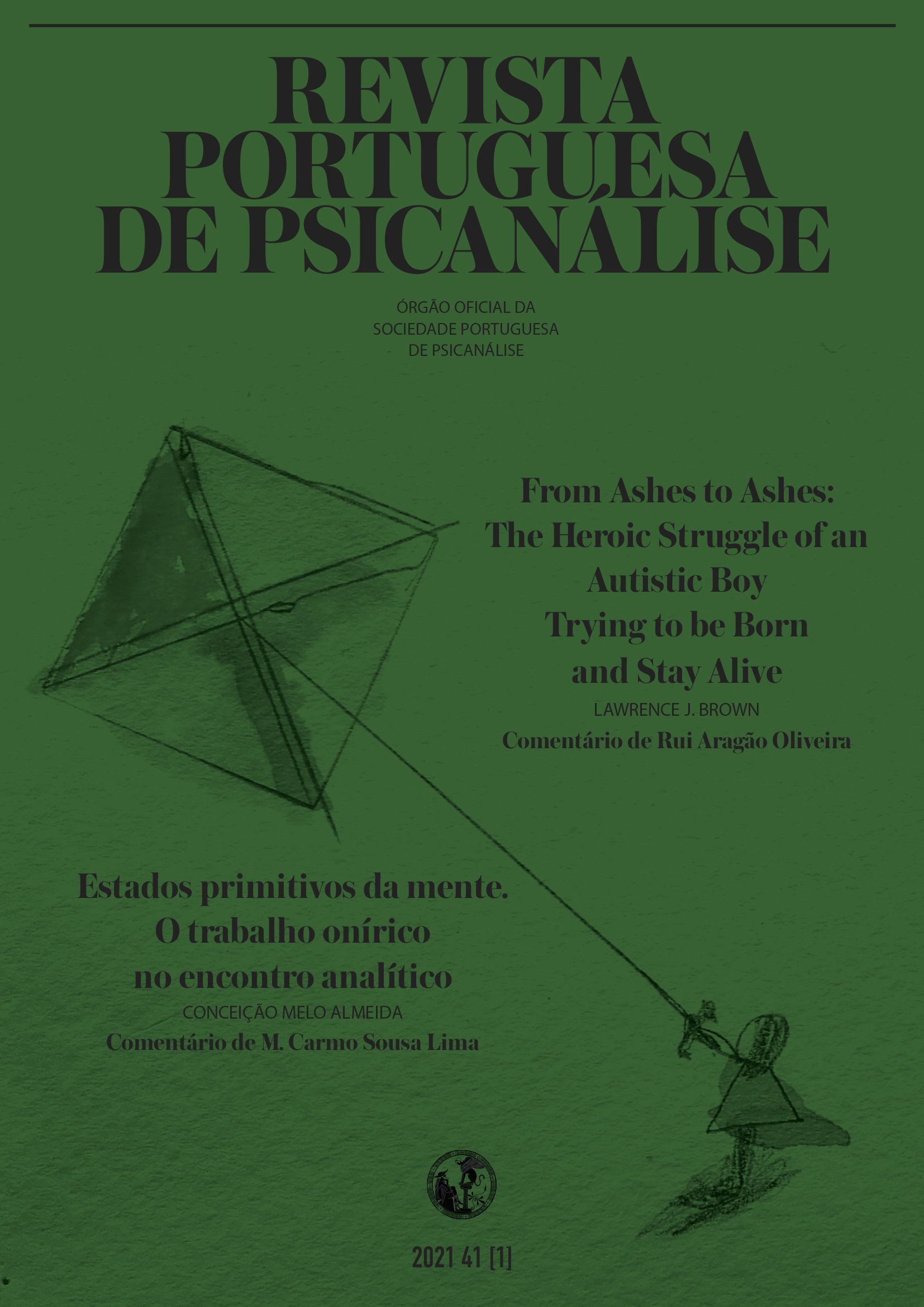Do caos ao renascimento do espaço psíquico

Abstract
From chaos to the rebirth of psychic space
The author makes a psychoanalytical elaboration based on a clinical investigation in the case of a child, where she highlights the different psychic consequences that occurred as a result of early separations and losses. It shows how the psychic collapse arising after the absence of the maternal object causes a narcissistic encapsulation which is difficult to access and that functions as a barrier that nullifies or avoids close relationships. It highlights and elaborates the different movements of the analytical process that go from chaos, to the construction of a sound cointainer that involves the analytical duo, to the birth of the first words that served to represent primary depression.
Keywords
Psychic chaos, Psychic space, Primary depression, Psychic transformations
Author Biography
Maria Fernanda Alexandre
Clinical and health psychologist, psychotherapist and psychoanalyst. Full member, with didactic functions, of the Portuguese Psychoanalysis Society (SPP) and of the International Psychoanalysis Association (IPA). Director of the Portuguese Magazine of Psychoanalysis.
References
- Alexandre, M. F. (2007). Mudanças Psíquicas no Processo Terapêutico. O papel do Narcisismo. Fenda.
- Anzieu, D. (1974). Le Moi Peau. Nouvelle Revue de Psychanalyse, 9, 195–208.
- Bégoin, J. (2005). Depressão e destrutividade na vida psíquica da criança. Do Traumatismo do Nascimento à Emoção Estética – Conferências Psicanalíticas em Lisboa. Fenda.
- Fialho, O. (2019). Desenho Infantil: Espelho do Mundo Interno da Criança. Colibri.
- Freud, S. (1976). Porque a Guerra?. Em Edição Standard Brasileira das Obras Psicológicas Completas de Sigmund Freud, XXII. Imago, 241–259. (Obra original publicada em 1932.)
- Gonçalves, M. J. (2019). Origem da vida psíquica, nascimento psíquico e originário. Revista Portuguesa de Psicanálise, 39 (2), 62–68.
- Green, A. (2007). Narcisisme de Vie, Narcisisme de Mort. Éditions de Minuit.
- Grotstein, J.S. (2009). “…But at the Same Time and on Another Level…” Clinical Applications in the Keinian/Bionian Mode. Karnac Books.
- Grotstein, J. S. (1999). O buraco Negro. Climepsi.
- Mahler, M. (1958). Autism and Symbiosis: two extreme disturbances of identity. The International Journal of Psychoanalysis, 39, 77–83.
- Meltzer et al. (1978). The Kleinien Development. The Roland Harris Educational Trust.
- Meltzer, R. (1975). Explorations in Autism: A Psychoanalytical Study. Karnac Books.
- Meltzer, R. (1967). The Psycho-analytical Process. The Clunie Press.
- Ogden, T. H. (1994). Subjects of Analysis. Karnac Books.
- Ovídio (2007). Metamorfoses. Cotovia.
- Pontalis, J-B. (1978). Entre le rêve et la douleur. Gallimard.
- Resnik, S. (1994). Espace mental sept leçons à l’université. Éditions Érès.
- Resnik, S. (1991). Espacio mental. Julián Yébenes Editores.
- Stern, D. (1986). The Interpersonal World of the Infant. Basic.
- Tustin, F. (1981). Autistic States in Children. Routledge.
- Tustin, F. (1973). Autistic Barriers in Neurotic Patients. Karnac Books.
- Winnicott, D. W. (1974). Fear of Breakdown. International Review of Psycho-Analysis, 1, 103–107.